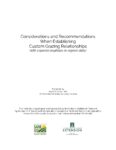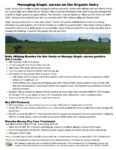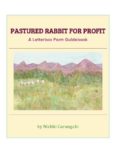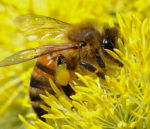Showing 1-4 of 4 results

Considerations and Recommendations When Establishing Custom Grazing Relationships
This guide and set of recommendations are intended for organic dairy farmers and other livestock graziers interested in starting a custom grazing relationship with a neighboring farmer or landowner. Successful custom grazing can provide or increase grazing acreage for those farmers who need it and can also provide opportunities for smaller, beginning, leased, and diversified […]

Managing Staph aureus on the Organic Dairy
Staphylococcus aureus is a bacterium that causes mastitis in dairy cattle. Staph aureus mastitis is highly contagious and can easily spread among the herd. Organic dairy farmer Katie Webb Clark conducted a Northeast SARE Farmer Grant project to test milking hygiene and preventative management protocols used in the U.S. and New Zealand, trialed Manuka honey […]

Pastured Rabbit for Profit
Pastured Rabbit for Profit is a guide written by New York farmer Nichki Carangelo. It is a practical resource intended to guide farmers through the start-up phase of a pasture-based rabbitry. It includes a full enterprise budget along with housing plans, sample breeding schedules, feed guidelines and other rabbit husbandry basics. Chapters include:

Native bees and flowering cover crops
While managed colonies of European honey bees are most frequently used for crop pollination, wild or native bees commonly provide the same pollination services for ‘free’ without the costs of renting or maintaining honey bee hives.